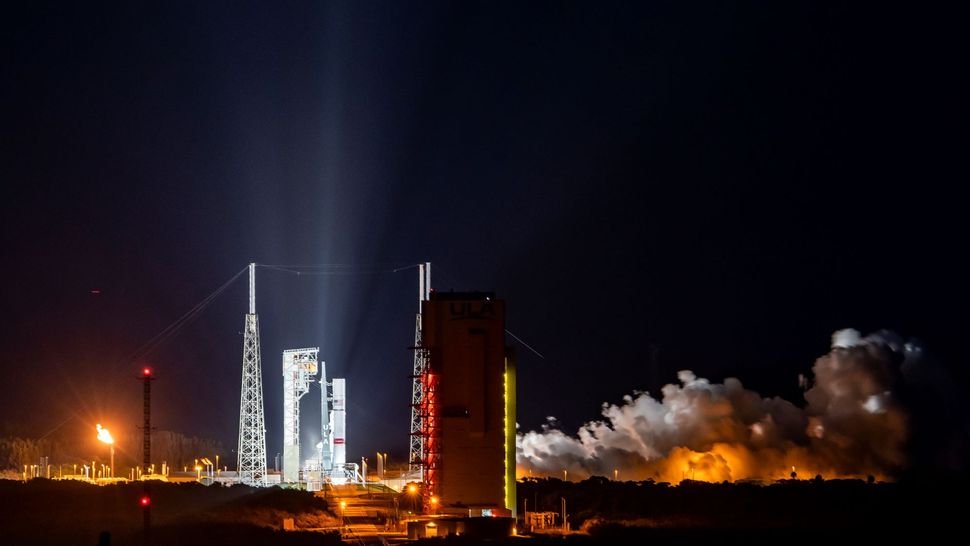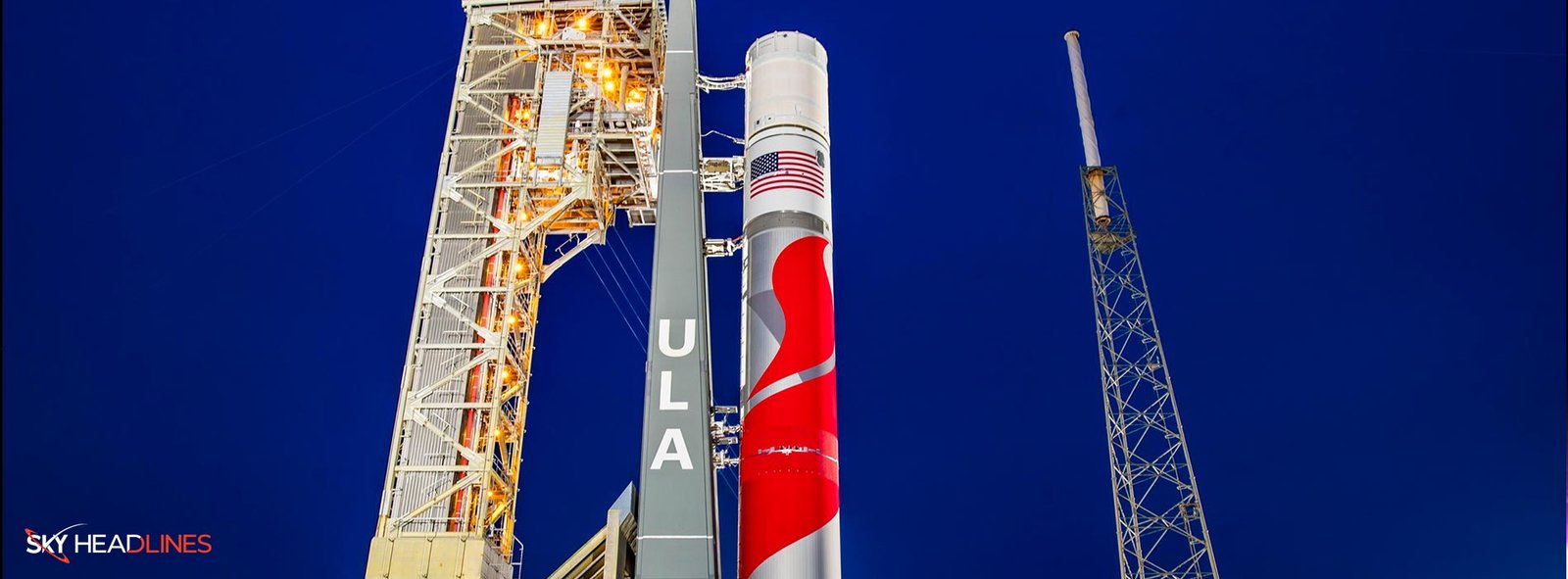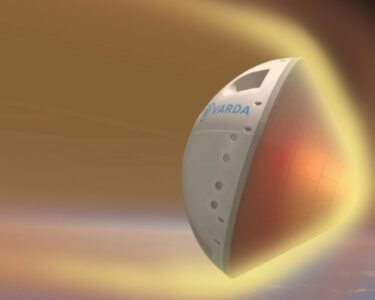News:
If you are wondering what is the Vulcan Centaur’s launch date, then it is recently launched on the evening of June 7. As we all know that being a launch vehicle, it has accomplished a significant milestone by performing a successful engine test.
This was the inaugural instance where both first-stage engines were simultaneously ignited on the launch pad at Cape Canaveral Space Force Station in Florida.
The quick test, known as a flight readiness firing (FRF), happened on June 8 at 9:05 p.m. EDT (0105 p.m. GMT).
And if we dig deep into the starting time of engines, then at T-4.88 seconds, the engine start process started. After two seconds of throttling up to the desired level, the engines then powered down. According to a statement from ULA tonight, six seconds made up the whole FRF.

The ULA has Atlas V and Delta IV launch vehicles that been replaced with the futuristic, 202-foot-tall (62-meter) Vulcan Centaur rocket launch.

How Big is Vulcan Centaur?
ULA’s upcoming rocket, the Vulcan Centaur, standing at an impressive height of 202 feet (equivalent to 62 meters). And it is set to supplant ULA’s longstanding Atlas V and Delta IV launch vehicles.
The reason for it long standing height lies behind the company’s cutting-edge space exploration vehicle.
First Launch of Vulcan Centaur:
When we look deeper into the news then we find out that two BE-4 engines from Blue Origin are used in the Vulcan Centaur first launch, while two RL-10 engines are used in the Centaur V upper stage.
Furthermore, the spacecraft has space for up to six additional solid rocket boosters that are attached to the main rocket.
What is Geostationary Orbit?
When the rocket is fully functional, it will have the ability to launch Vulcan Centaur payloads weighing up to 7.7 tons (7 metric tons) into a high orbit around the Earth called geostationary orbit. Although it has not yet taken flight, ULA is striving to alter that, as seen by today’s test.
According to the company’s report from tonight,
“We are more than 98% complete with the Vulcan reusable qualification program, with the remaining items associated with the final Centaur V testing.”
The crew is continuing to look into the Centaur V test stand anomaly while also evaluating the data from the systems used in today’s test, they said.
“We will develop a launch plan pending the data review and the findings of the investigation.”
On March 29, a Centaur burst on a test stand at NASA’s Marshall Space Flight Center in Alabama following a hydrogen leak, resulting in the anomaly mentioned in that update. Before that event, ULA had planned to launch the Vulcan Centaur for the first time in early May.
Where Will Vulcan Centaur Launch?
As ULA has launched the one of the biggest, and interesting heavy two staged launch vehicle, now comes the position, where it will be launched.
So, tonight marks the inaugural test fire of United Launch Alliance’s newly developed Vulcan Centaur rocket, which will take place on the launch pad at Cape Canaveral Space Force Station.
Now, let’s talk about the peregrine. What is it actually about?
Vulcan Centaur Peregrine, A Lunar lander From Aerospace
Astrobotic, a Pittsburgh-based company, has developed the Peregrine lunar lander, which will embark on its inaugural mission to the moon. ULA representatives have indicated that the mission might potentially launch sometime this summer.
However, an exact launch date has not yet been announced by the company.
In tonight’s update, ULA stated that testing is a crucial component of their development program for launch vehicles and that they would only fly when they felt it was safe to do so.
On May 25, ULA made an attempt to execute the FRF but had to cancel the test during the countdown due to a booster-related technical issue.
Following the cancellation, the company smoothly conducted an inspection and study of the Vulcan Centaur, which was subsequently moved off the pad and into its Vertical Integration Facility hangar.
Difference Between Vulcan Centaur and Falcon 9
There is a clear difference between these two in many terms. The Vulcan Centaur has a payload capacity of 60,000 pounds (27.2 tons) for low Earth orbit (LEO) and 14,300 pounds (6.5 tons) for geosynchronous orbit (GEO).
In contrast, SpaceX’s Falcon 9 has the ability to transport 50,000 pounds (23 tons) to LEO and 18,300 pounds (8.3 tons) to GEO.
How Many Successful Launches has ULA Had?
Apart from Vulcan Centaur ULA, it has many successful launches so far. Let’s have a glance at the keen launches, and see how they had made a difference.
The most seasoned and dependable launch service provider in the nation, ULA boasts a rich legacy spanning over a century. Over the years, ULA has achieved pleasing success by flawlessly executing over 150 missions to orbit.
These missions have played a pivotal role in providing essential capabilities for soldiers deployed in the field. Which further aids the meteorologists in monitoring severe weather conditions.
It will not help to gather important pieces of news for weather, but also facilitate GPS navigation on personal devices. Since its inception, ULA’s rockets have been instrumental in positioning the satellite assets worth over $70 billion into orbit.
So, it has been clear seen that besides the heavy Vulcan Centaur’s launch, ULA has launched many successful satellites that has benefited in many ways.





